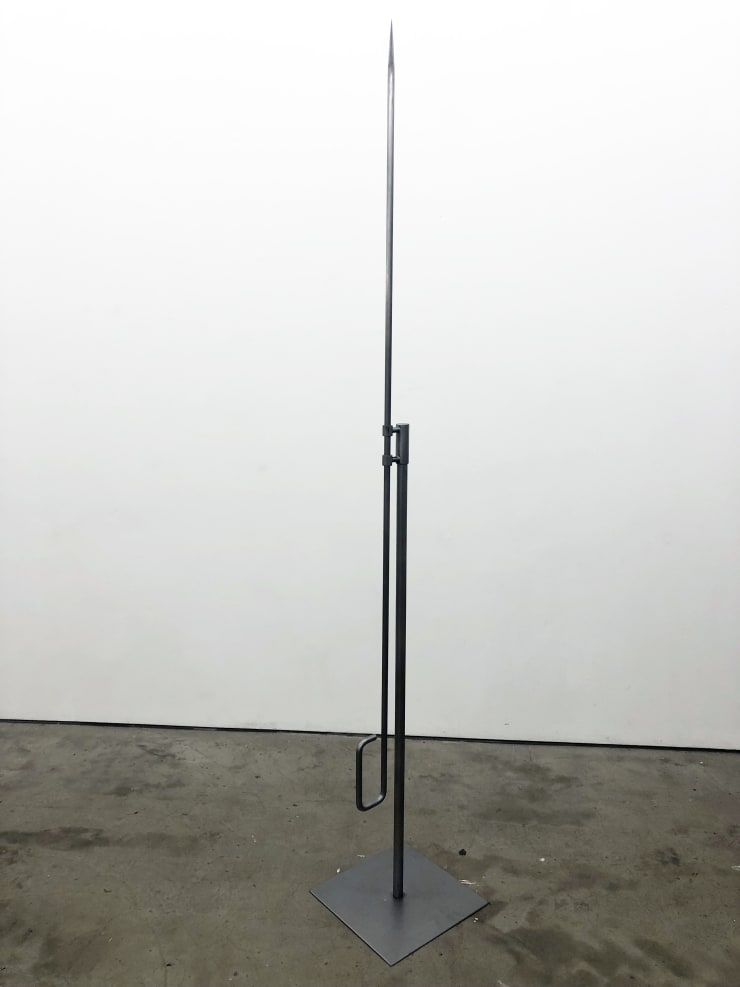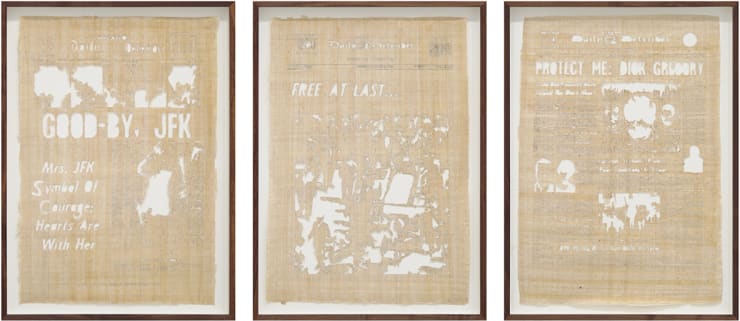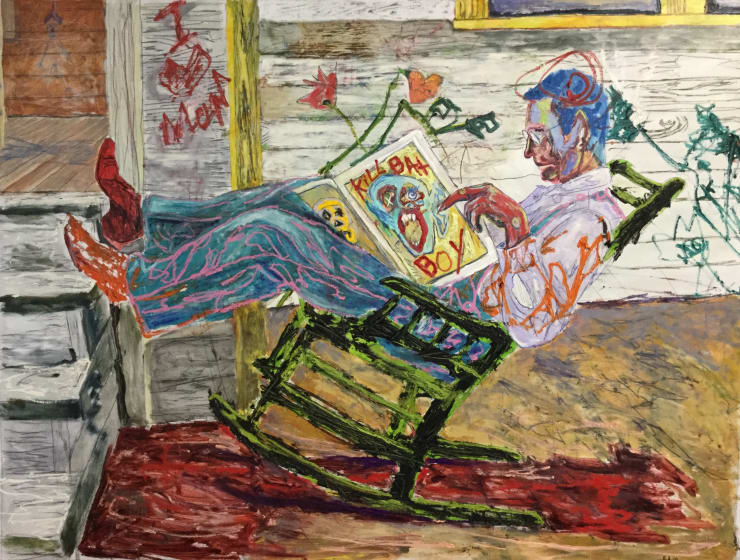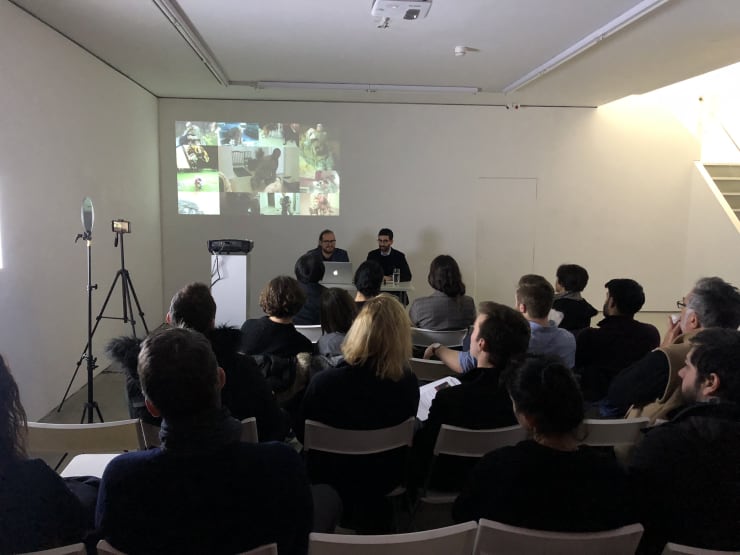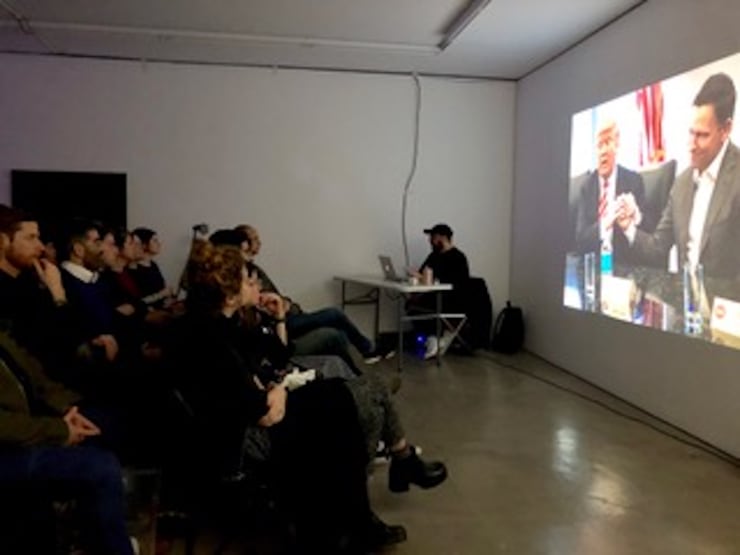We are the people. Who are you?
Private View | Thursday 17 January 6-8 pm
Farley Aguilar | Zach Blas & Jemima Wyman | Jamal Cyrus | Funda Gül Özcan | Karl Haendel | Anna Jermolaewa | Nikita Kadan | Victoria Lomasko | Rachel Maclean | Emmanuel Van der Auwera
The present formula of TV debate is designed to corrupt the public judgment and, eventually, the whole political process. The American presidency is too great an office to be subjected to the indignity of this technique.
Henry Steele Commager, 1960
Edel Assanti presents We are the people. Who are you?, a group exhibition of eleven artists examining the current status of democracy.
The exhibition explores the media and geographies of a sociopolitical space in transition, revisiting the contexts of public protest and the free press to question our shifting relationship with traditional liberal institutions. It simultaneously points towards new trajectories, in which the act of viewing con- tent has profound consequences, politicians materialize via holograms, and society worships data.
'I was listening to it on the radio and I thought Nixon was doing a great job...' Bob Dole, the 1996 Republican presidential nominee, recalled in a PBS interview. 'Then I saw the TV clips... he didn’t look well. Kennedy was young and articulate and wiped him out.'
When Marshall McLuhan asserted that the medium is the message in 1964, the world had just begun to comprehend the paradigm shift that had taken place in the first televised political debate. McLuhan’s phrase proposed that the medium of communication had a symbiotic relationship with the content that was being transmitted. His observation gains new currency in the 21st century, where old forums for political discourse seem progressively irrelevant, and the shape of debate has evolved to fit a new mould.
A new debate has arisen around how opinions are constructed. Do technology and democracy exist in harmony, or conflict? Are we free agents, or “hackable” animals?
How will liberal democracy adapt to this climate?
-
 Anna Jermolaewa, Political Extras, 2015
Anna Jermolaewa, Political Extras, 2015 -
 Victoria Lomasko, Other Russias, 2017
Victoria Lomasko, Other Russias, 2017 -
 Nikita Kadan, Tiger's Leap, 2018
Nikita Kadan, Tiger's Leap, 2018 -
 Rachel Maclean, It's What's Inside That Counts, 2016
Rachel Maclean, It's What's Inside That Counts, 2016 -
 Jamal Cyrus, Kennedy King Kennedy, 2015
Jamal Cyrus, Kennedy King Kennedy, 2015 -
 Emmanuel Van der Auwera, Red IV, 2018
Emmanuel Van der Auwera, Red IV, 2018 -
 Karl Haendel, Hillary Clinton, 2016
Karl Haendel, Hillary Clinton, 2016 -
 Farley Aguilar, Bat Boy, 2018
Farley Aguilar, Bat Boy, 2018 -
 Zach Blas and Jemima Wyman, I'm here to learn so, 2017
Zach Blas and Jemima Wyman, I'm here to learn so, 2017 -
 Emmanuel Van der Auwera, White Noise, 2018
Emmanuel Van der Auwera, White Noise, 2018 -
 Funda Gül Özcan, It Happened as Expected, 2018
Funda Gül Özcan, It Happened as Expected, 2018
-
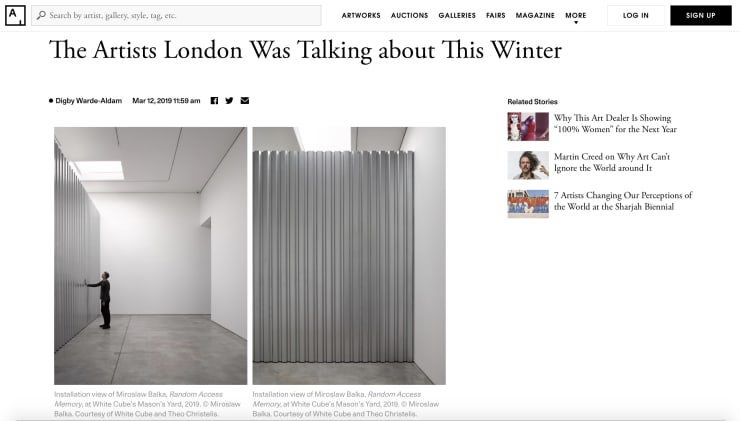
'We are the people. Who are you?' in Artsy
'We are the people. Who are you' by Digby Warde-Aldam 12 March 201912 March 2019 It has been a milder winter than normal here in London, yet the city’s psychological climate has been nothing if not bleak...Read more -
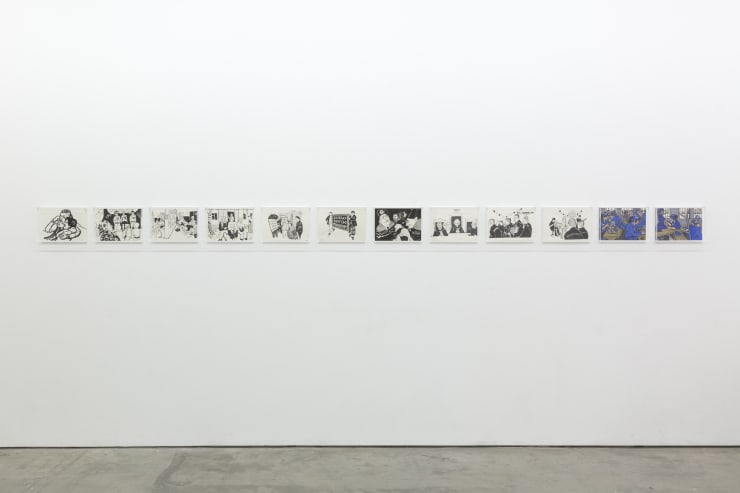
'We are the people. Who are you?' in art agenda
'We are the people. Who are you' by Izabella Scott 7 March 201907 March 2019 Farley Aguilar’s cartoonish Bat Boy (2018) is hanging in the first room of “We are the people. Who are you?” at Edel...Read more -
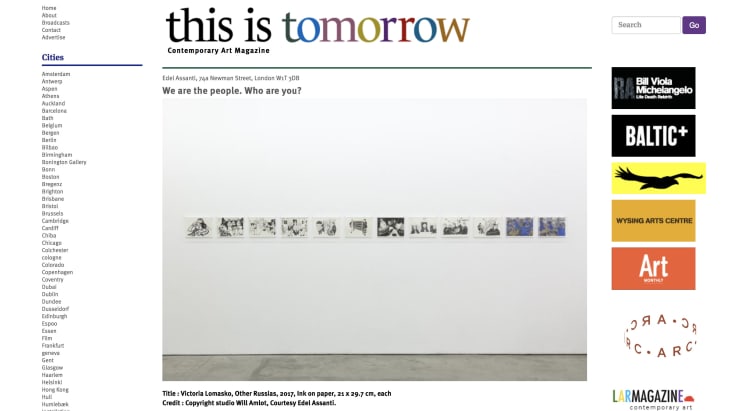
'We are the people. Who are you?' in This Is Tomorrow
'We are the people. Who are you' by Piers Masterson 4 March 201904 March 2019 A timely exhibition, ‘We are the people. Who are you?’ is an insightful essay representing current anxieties over the health of our...Read more -

'We are the people. Who are you?' in Art Monthly
'We are the people. Who are you?' by David Barrett 27 February 2019'We are the people. Who are you?' in Art MonthlyRead more -
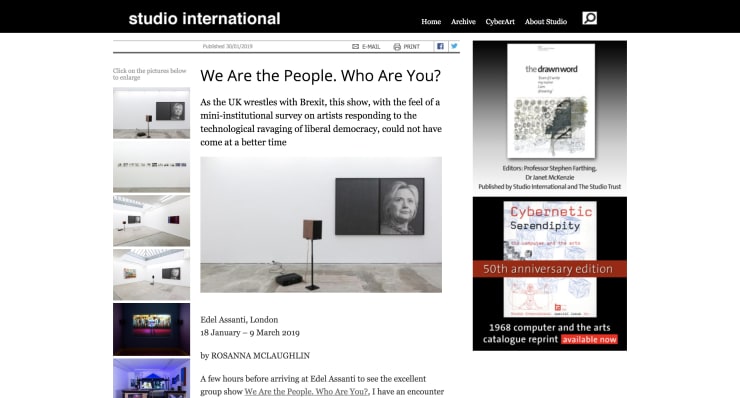
'We are the people. Who are you?' in Studio International
'We are the people. Who are you?' by Rosanna McLaughlin 30 January 201930 January 2019 As the UK wrestles with Brexit, this show, with the feel of a mini-institutional survey on artists responding to the technological ravaging...Read more -
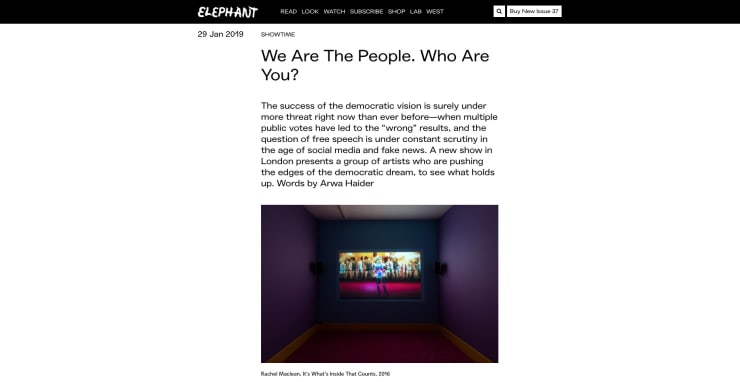
'We are the people. Who are you?' in Elephant Magazine
'We are the people. Who are you?' by Arwa Haider 29 January 201929 January 2019 The success of the democratic vision is surely under more threat right now than ever before—when multiple public votes have led to...Read more -
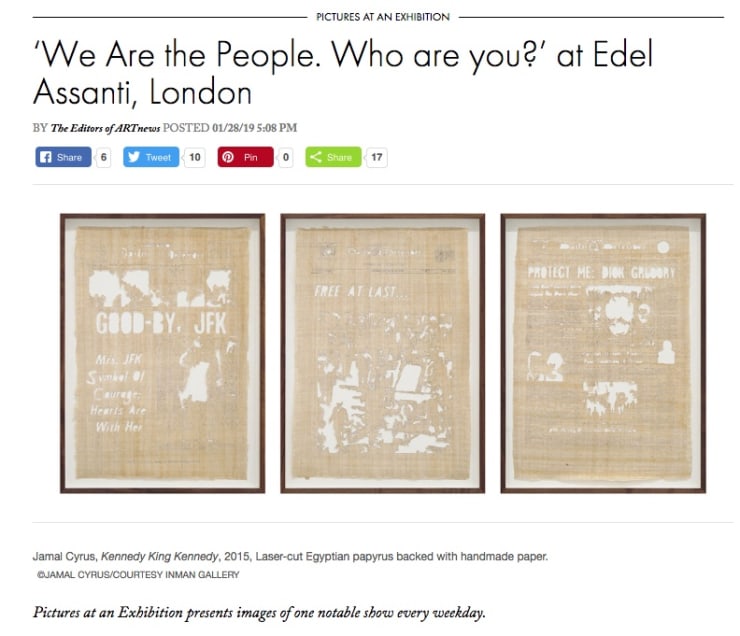
'We are the people. Who are you?' in ARTnews
'We are the people. Who are you?' Image feature in ARTnews 28 January 201928 January 2019 Today’s show: “We Are the People. Who are you?” is on view at Edel Assanti in London through Saturday, March 9. The...Read more




